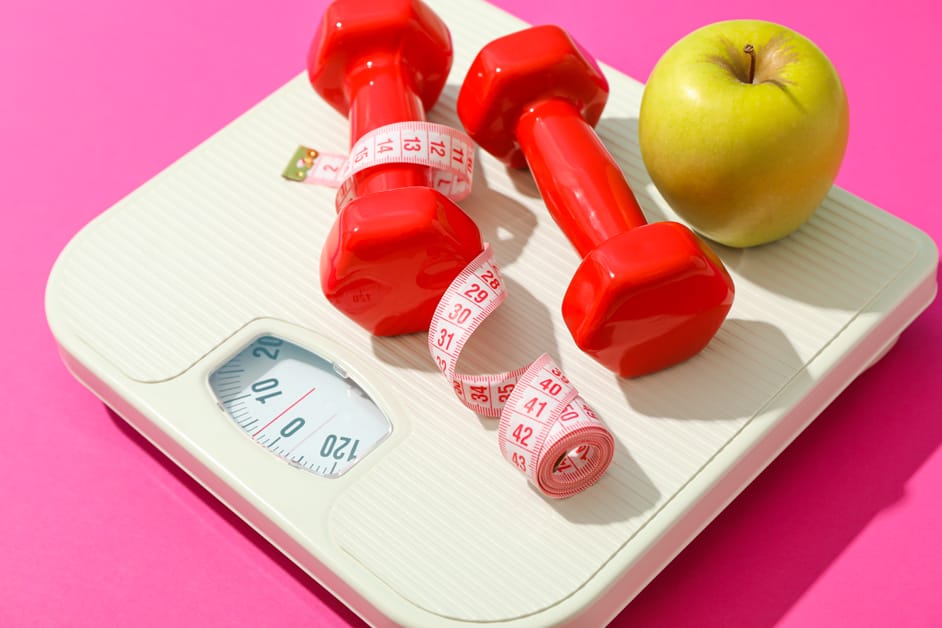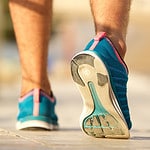Introduction
Gout knee pain is a type of arthritis that results from too much uric acid in the body. It typically causes sudden, severe pain, redness, swelling and immobility of the joint. Gout is often seen in the knees, but it can show up anywhere. There are natural solutions to reduce the risk of gout knee pain. Here are some tips:
- Change your diet
- Increase your physical activity
- Manage your weight
- Reduce alcohol consumption
- Avoid certain medications
- Drink plenty of fluids.
What is Gout?
Gout is an inflammatory arthritis caused by too much uric acid within the joint cavity. This results in crystals forming and intense pain, swelling, and inflammation. Symptoms of gout can range from mild to severe and can include sudden shooting pain in the knee joint, redness and heat around the affected area, stiffness and difficulty moving the knee joint.
Gout is more common among certain populations, such as men over 40, post-menopausal women, people with obesity or hypertension, people who have high levels of purine in their diets, heavy drinkers, and those with a family history of gout. The cause of gout remains unknown but may be linked to a genetic disorder called Lesch–Nyhan Syndrome, an increased production of uric acid due to rapid cell turnover, or medications like diuretics or immunosuppresants.
To reduce the risk of gout knee pain, lower consumption of dietary purines found in foods like red meat, poultry, organ meat, certain seafoods, yeast extracts, soy sauce and some vegetables. Regularly consuming certain fresh fruits such as apples and cherries can also help reduce formation of deposits through their anti-inflammatory properties. Exercise regularly can help strengthen joints and muscles around them. Doctors may also recommend dietary supplements containing omega 3 fatty acids like fish oil containing EPA and DHA which have been seen decreasing inflammation and easing pain while increasing overall range of motion within affected joints. Additionally, maintaining healthy weight goals through proper diet choice and exercise coupled with lifestyle changes can help control symptoms during flare ups. Finally, reducing exposure to elevated temperatures, such as during strenuous activities, will help reduce future episodes.
What Causes Gout?
Gout is a health issue caused by uric acid crystals forming around joints. Uric acid is made when the body breaks down purines, which are found in some foods. To reduce the chances of knee pain and future gout attacks, it’s important to know what causes gout.
Common causes include:
- Eating high-purine foods – Liver, anchovies and organ meats are examples of animal products that contain purines. Eating too much of these can lead to uric acid levels rising and triggering an attack.
- Alcohol – Drinking too much alcohol can cause uric acid levels to rise, leading to a gout attack.
- Medications – Some meds can cause uric acid levels to increase or lead to dehydration or kidney problems, which can bring on an attack. They may also cause kidney stones, which can contribute to gout or cause painful symptoms after passing out of the body in urine.
- Genetics – Gout can be inherited from family members. Certain ethnic backgrounds might have a higher risk of developing gout.
- Obesity – People who are overweight are more likely to get gout. Excess weight increases pressure on bones and joints, bringing inflammation and tissue damage that can cause an attack.
Symptoms of Gout
Gout is a disease that causes sudden and severe pain, tenderness, redness, warmth, and swelling in the joints. It is caused by high levels of uric acid in the bloodstream.
Gout usually strikes one joint at a time; it often affects the big toe, knees, or other joints.
The main symptom of gout is an attack of extreme pain. This pain can come on suddenly and last for days. It is usually accompanied by redness, warmth, and swelling in the area of the joint. Some people also have rashes or a fever during gout attacks. Gout can last for days or even months if it is not treated. It can also reoccur if it is not managed properly. It is important to recognize early signs of gout and treat it right away.
Risk Factors for Gout
Gout is a painful form of arthritis affecting the knee joint. It is caused by high uric acid levels, which crystallize and cause gout. Treatments can manage the pain, but lifestyle changes can help reduce risk.
Risk factors include metabolic syndrome, obesity, genetics, alcohol, kidney problems, and age. Metabolic syndrome includes excess belly fat, high cholesterol, and high blood pressure. Obesity increases uric acid levels and genetics may mean those with family members with gout are at higher risk. Alcohol interferes with the body’s ability to eliminate uric acid and those with kidney problems have difficulty eliminating waste. Ageing increases risk as kidney efficiency decreases in old age.
Diet changes like limiting alcohol and eating antioxidant-rich foods can lower risk. Exercise helps prevent metabolic syndrome and maintain a healthy weight. This can help lower risk of GOUT SEXUALLY transmitted diseases (STD).
How to Reduce Your Risk of Gout Knee Pain Naturally
Gout knee pain can be really awful and can get in the way of living life. You can take medicine to try and ease it, but there are also some natural methods to reduce the risk. In this article, we’ll look at some of the most successful natural approaches to managing gout knee pain:
Maintain a healthy weight
A healthy weight is vital to reducing the chances of gout knee pain. Studies show that those with gout are usually overweight or obese compared to those without it.1 Therefore, weight management is essential for preventing or managing gout.
Keeping uric acid levels low, which is common in people with gout, is possible when you maintain a healthy weight.2 Also, losing weight can decrease inflammation in the joints and reduce gout symptoms.3 Aim for slow and steady weight loss and work towards having a healthy BMI. Rapid or large amounts of weight loss can increase the risk of gout.4 To reach your goals and improve health, get help from a health coach who can make a plan just for you.5
Eat a balanced diet
Eat a balanced diet full of fresh fruits and veggies, whole grains, and lean proteins. Include healthy fats like olive oil and fatty fish like salmon, mackerel and sardines. Cut out processed and high sugar foods.
Drink plenty of water; aim for 8-10 glasses per day. Also, get enough sleep. Lack of sleep is associated with higher uric acid levels.
Exercise can help reduce the symptoms of gout knee pain. Try swimming or walking. This will improve circulation and keep joints flexible, as well as reduce joint inflammation.
Reduce alcohol intake
It’s wise to slash your alcohol consumption if you want to lower the danger of gout knee pain. Alcohol meddles with the body’s natural uric acid excretion process, thereby raising levels in your joints. So, if you have gout, habitual or recurring alcohol use can amplify the risk of flare-ups and aggravate inflammation due to uric acid build-up. Therefore, cutting back on alcohol is a key preventative measure when striving to reduce gout knee pain naturally.
How much (or if any) alcohol should be drunk while managing gout is dependent on individual risk factors, so it is best to take the advice of an experienced healthcare provider who is knowledgeable about this condition. Several guidelines that may help reduce risk include:
- Men should not have more than two alcoholic drinks per day, and women one (if possible);
- Stay away from beer or other drinks containing high levels of purines;
- Try mocktails instead (e.g., add carbonated beverage with juice instead of rum or vodka); and
- Sip plenty of water or other hydrating drinks in between alcoholic drinks to reduce volume reported intake, and if possible pace yourself over longer periods (e.g., several hours).
Drink plenty of water
Hydrate to reduce the risk of gout knee pain! The National Institute of Arthritis and Musculoskeletal and Skin Diseases says that water helps normal joint function. Make sure to drink at least eight glasses of water daily—that’s two liters. You can also choose fruit juices, herbal teas, or other low sugar beverages. Keep hydrated for a healthier body!
Exercise regularly
Exercising can reduce your risk of gout knee pain. Contrary to popular belief, exercise is actually beneficial in keeping joints healthy. It reduces stress and increases blood circulation. This helps to prevent gout and other issues like osteoarthritis.
When it comes to gout knee pain, specific exercises are helpful. Regular walking works well for the area and muscles. Low-impact activities like swimming or biking can ease joint stiffness and improve flexibility. Strength training should also be included to bring stability back to your knees. Lastly, avoid high-impact activities that may cause inflammation or gout knee pain.
Avoid foods high in purines
Gout is a form of arthritis caused by too much uric acid in the blood. This chemical is made when the body breaks down purines found in certain foods. Eating these can lead to more uric acid and a higher risk of gout and knee pain.
It’s essential to identify purine-rich foods if you want to reduce the chance of gout pain. These should be avoided or eaten rarely:
- Organ meats such as liver, kidneys, and sweetbreads
- Fish like anchovies, sardines, herring, and mackerel
- Shellfish like mussels, oysters, and scallops
- Game meats such as deer and rabbit
- All types of gravies
- Alcohol like beer
In addition to steering clear of purine-heavy food items, there are other lifestyle changes that can help. Exercise often to decrease the uric acid in the joints; reduce weight (if needed) to ease joint stress; eat plenty of healthy carbs like fresh fruit and veg; drink lots of water; quit smoking; limit alcohol, especially beer; and reduce sodium intake for a lower risk of gout knee pain.
Conclusion
Gout in the knee? Reduce your risk! Diet and exercise are key. Triggers should be avoided. If pain or other symptoms arise, contact your doctor right away.
By taking the necessary steps to prevent and manage gout in the knee, you can help reduce inflammation and discomfort and avoid any potential complications.
Frequently Asked Questions
Q: What is gout knee pain?
A: Gout knee pain is a form of arthritis caused by a buildup of uric acid in the joints, especially in the knees. It can cause inflammation, swelling, and intense pain.
Q: What are the risk factors for developing gout knee pain?
A: Risk factors for gout knee pain include excessive alcohol consumption, high-purine diet, obesity, kidney disease, certain medications, and genetics.
Q: What are some natural ways to reduce gout knee pain?
A: Some natural ways to reduce gout knee pain include drinking plenty of fluids, maintaining a healthy weight, avoiding high-purine foods, exercising regularly, and supplementing with natural remedies such as fish oil and cherries.





